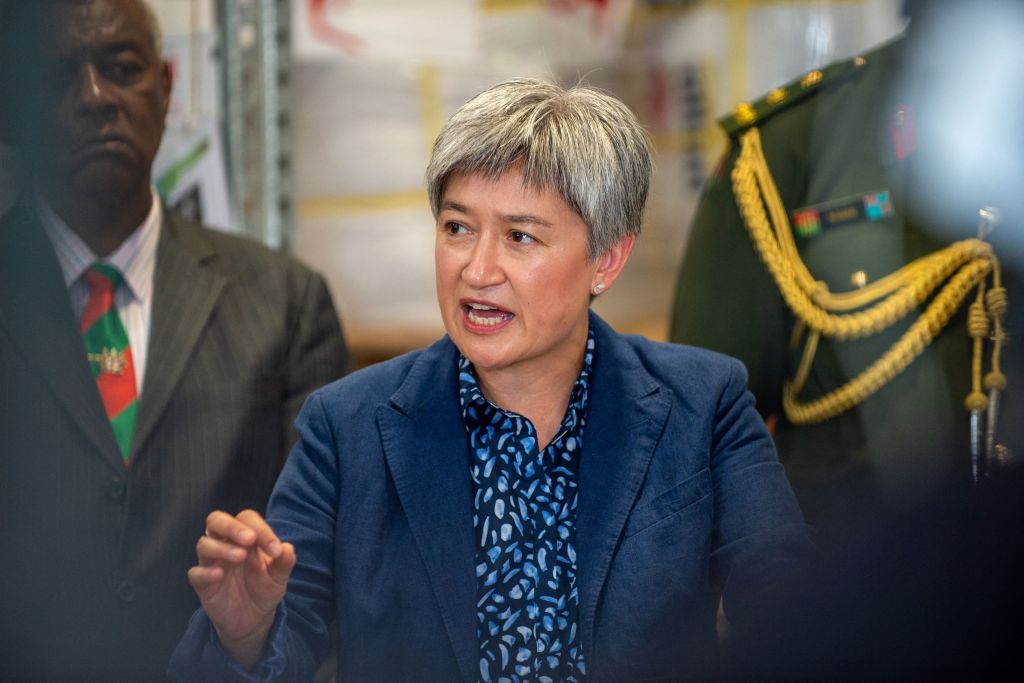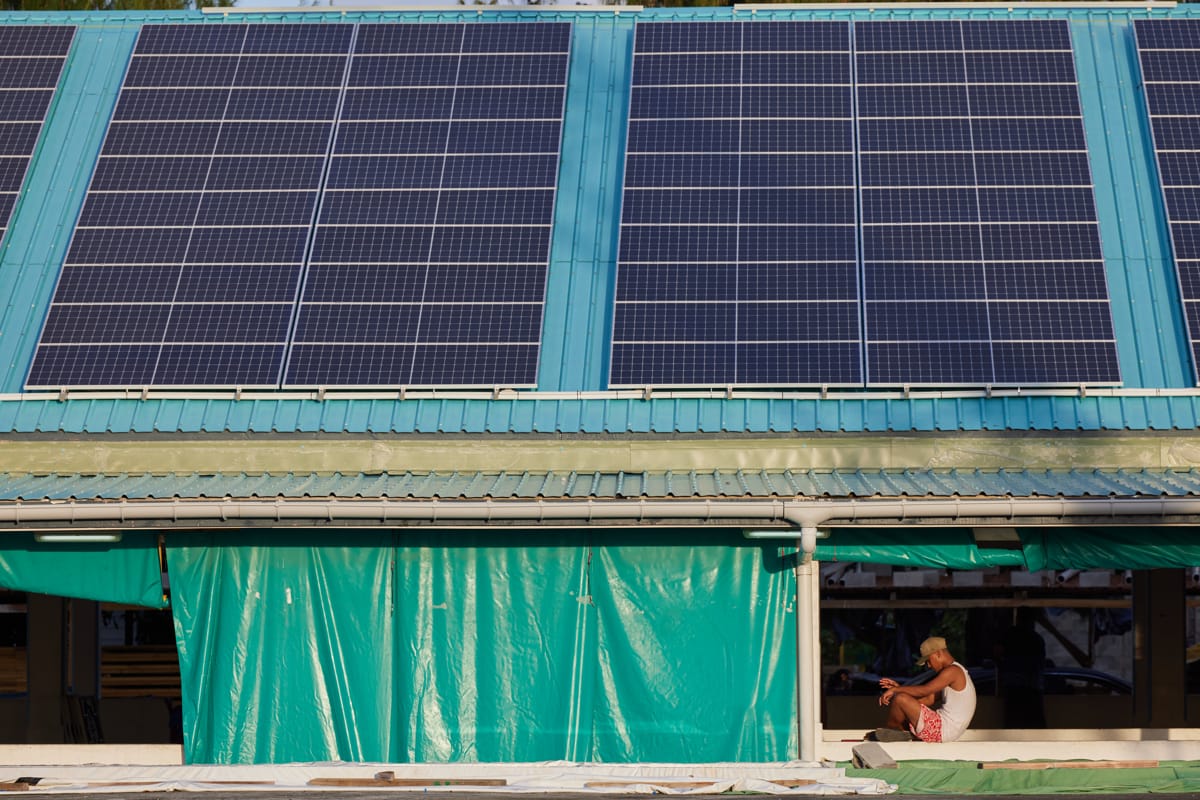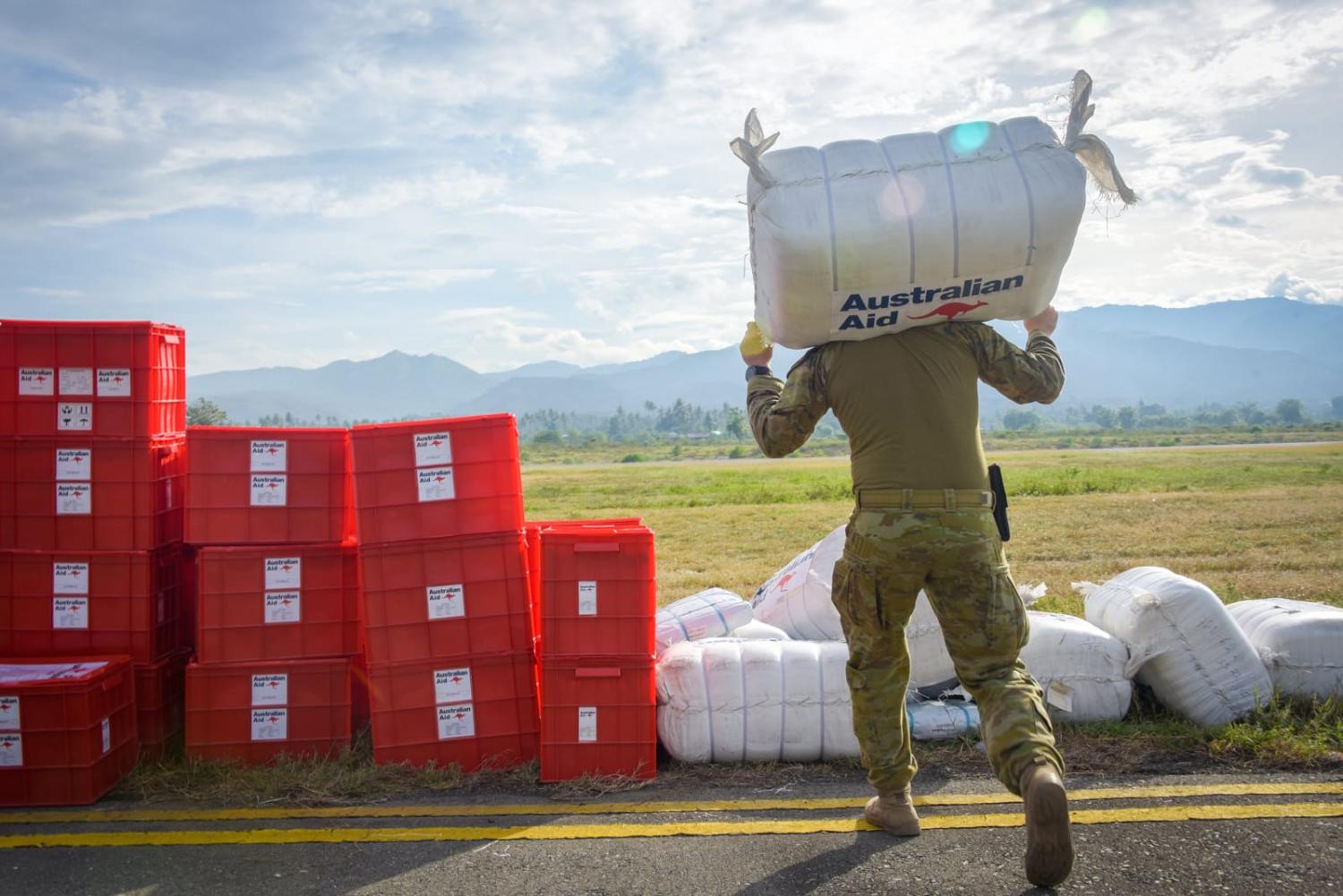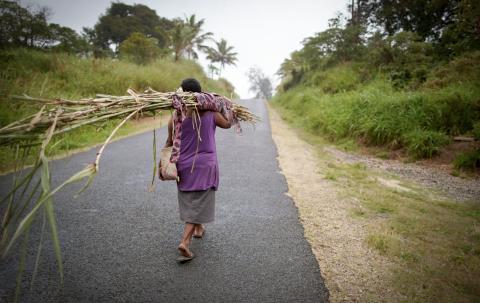Foreign Minister Penny Wong is not one for hyperbole, so when she states that the “coming decade will be decisive for peace, stability and prosperity in the Indo-Pacific”, in her foreword to Australia’s latest aid policy, it’s a call to sit up and take notice.
Bureaucrats follow suit, opening the policy by saying, “We face the most challenging strategic circumstances in the post-war period.”
Given these early warnings, what follows in the document, released in August, is puzzling as there is a fundamental mismatch between compounding crises, complicating Australia’s strategic circumstances and the policy’s tepid responses. “Not a priority”, one government source was reported to have said on its launch, referring to future funding increases, but conveying a much wider message.
Development cooperation is a set of tools for framing and responding to challenges facing developing countries, providing opportunities for Australian engagement and influence as well as ideas and financing for counterparts. It is a unique platform for dialogue, engagement and relationship-building.
“Foreign aid” as a charitable response to deprivation is but one part of development cooperation, which is increasingly a knowledge-based, policy business, requiring nimble political-economy analysis and well-informed, on-going risk management. Aid and development cooperation are typically bundled together and dismissed by foreign policy “hardheads”, missing the point that cleverly used development cooperation can help define and drive whole-of-government integrated policy. There is no better example than Pacific labour mobility reforms, hailed belatedly as a policy breakthrough, but championed over a decade or more by Stephen Howes, Director of the Development Policy Centre at the Australian National University.
For 40 years, Australia pursued development policy and aid delivery through a dedicated agency – AusAID – until a 2013 merger making the Department of Foreign Affairs and Trade directly responsible for development as well as diplomacy. The aim then was alignment of priorities, strategies and objectives. But more than a decade later, integration cannot be judged a success, with the department much less well equipped than it was in 2013 to approach development as a serious and influential international player.
Despite claims to the contrary, the government’s new aid plan is no more a development policy than its 2014 predecessor. It is a very loose aid framework, laced with good intentions, vague commitments, and pleas to be patient. An integrated development policy – which Australia desperately needs – would offer a cut-through analysis of development threats and opportunities and how they impact on the country as well as the region. It would set out how various strands of international policy - e.g. economic, security, environmental and people movement – might be coordinated with and through aid to deliver a more effective Australian response. And it would deliver the money and means to do so.
Those who have responded positively to the policy are principally interested in the aid side of the picture and their interests have been reasonably well catered for. They rightly applaud the emphasis on climate change, gender and first nations. They love the localisation agenda and also the contradictory pledge to use a wider range of Australian capability. They are understandably pleased with a new pot of money for civil society concerns. These policy measures are fine, as far as they go, but they will not make Australia “a partner of choice”, nor maximise the overall development and strategic impact of the program.
For Australian National University academic Ben Day, the big disconnect is between invoking dire circumstances and the declining resources the government is devoting to tackling them. The development program is continuing to shrink as a proportion of the Australian economy – and is contracting much faster as a proportion of the economies Australia is working in, reducing its influence.
Rolling cuts mean Australia has slipped to the bottom end of the Organisation for Economic Cooperation and Development “poor performers club”, now ranking 27 out of 30 rich countries. Former foreign minister Gareth Evans is not the only one worried that we’re free-riding. The government’s response, a ten-year commitment to preserve the real value of the development program, sounds good, until you realise that in 2033 that will leave Australia spending one dollar in nearly seven hundred on development cooperation as a proportion of national income, half what the country was spending in the 1990s. As the world becomes more multi-polar, middle powers need to step up, but Australia is sitting on the sidelines, failing on the self-proclaimed “playing our part” rhetoric.

Of course, money isn’t everything. One powerful route to enhanced impact and influence would be to concentrate on the places and things that matter most. The new policy commits to focus – there is a growing interest within senior ranks in DFAT in doing fewer things better. This is encouraging. But it is undercut by adopting the whole of the Indo-Pacific as “our region”, when Australia is already flat out dealing with challenges in the South Pacific. Similarly, the objective of “peace, stability and prosperity” while laudable, allows for just about anything, encouraging over-reach.
The truth is that DFAT in 2023 is not equipped, or organised, to sustain the sort of intense, partner-focused, knowledge-based, adaptive approaches needed across a wide expanse of geographic or policy territory. Consequently, by default and not design, Australia has ended up with a lop-sided, Pacific-dominated development program that gives very inadequate attention to the developing countries of Southeast Asia that Australia aspires to engage with more deeply and whose policies it wants to influence positively.
Southeast Asia’s rapidly growing demographic, economic and political weight are making it a hot spot of diplomatic positioning and geopolitical contestation, particularly with China. If Australia is to be “a partner of choice” beyond the Pacific, as Wong desires, it needs a sophisticated understanding of international experience in key economic and social policy areas, the ability to undertake detailed country diagnostics, and to work closely and respectfully with counterparts, taking account of their preferences and policy choices. Australia once had this capability, but decided it was no longer needed, now frequently outsourcing even strategy and policy.
In the course of the last few years, I have had four, over-burdened Australian ambassadors in the Southeast Asian region tell me that they don’t want complex, policy-influencing programs, but rather simple, self-contained, low-risk aid projects that they don’t have to worry about. Southeast Asia, with its development challenges and strategic importance, is the wrong region in which to be dumbing down. But that’s what an underfunded DFAT and short-term institutional incentives are delivering.
It would take much more creative, integrated policy and programs, aid and beyond, to make any difference to the trajectory of the region and to nudge countries towards openness, better governance and the rule of law. However, a chronically degraded department that has stripped out, atomised and devalued development capability does not have the ability to think or work in these ways.
The clearest example of that is that the policy provides very little discussion of economic growth, and how it is best facilitated, broadened and sustained, beyond a small nod to infrastructure financing and legitimate concerns about growing indebtedness. There is no cross referencing to, let alone integration with, other major pieces of work, such as DFAT’s recently released Southeast Asia Economic Strategy.
This is very odd. East Asian growth has been the main source of spectacular poverty reduction, development and greater regional resilience over the last 30 years – and is driving big changes in the regional balance of power. That growth is now slowing, while for many countries, the middle-income trap looms. What is the Australian view of where this is headed, what countries might do and how we might help? Who knows? There has been no Ministerial statement or speech dealing substantively with Asian development in more than a decade, despite it being at the top of regional priorities.

It is highly debated in Australia and the region whether Australia is now the partner of choice in the Pacific, current “triumphs” notwithstanding, but it is incontrovertible that we do not have such status in Southeast Asia. Penny Wong wants to change that, but it’s hard to see how when Australia is neglecting a principal means of engagement with regional leaders on the things that matter most to them. Australia no longer has sufficient dedicated capacity to undertake this role and some remedial training won't fix the problem. As a result, the government is not able to trace through the consequences of its policy and program choices, or see their manifest inconsistencies. Australia is simply not being rigorous enough – institutional arrangements do not allow it.
Five years ago, I reviewed the progress of the 2013 DFAT-AusAID integration. I assessed the new integrated system as weak, but evolving, with some hope that continual improvement would make it effective. Five years later, the principal weaknesses of the system remain – strategic ambiguity about what Australia is trying to achieve; lack of sustained, senior buy-in; reduced, dispersed and poorly used capability; degraded systems; and an unsupportive culture. The challenges, however, are much greater. The new aid policy responds to each of the weaknesses, but in very modest ways that will not deliver the high performance the government says it wants.
While there is a welcome emphasis on re-establishing some of the fundamentals of aid programming, with country consultations, country planning, program evaluation, transparency and accountability, these only take us so far. They are essential parts of an old aid production line, too often churning out projects of declining usefulness. Today’s challenges, including deglobalisation; the need for a rapid, clean energy transition; and the highly disruptive rise of artificial intelligence, require a complete revamp of the business, which the department is not able to imagine, let alone undertake.
The poorly articulated, but plausible logic of then prime minister Tony Abbott’s 2013 DFAT-AusAID integration was that it would produce stronger alignment between diplomatic and development efforts. By bringing it all together, the government would get better results. In reality, while prime ministers John Howard and Kevin Rudd had each scaled-up Australian aid too fast, the inferred misalignment was an illusion, like the gains of integration. Former foreign minister Alexander Downer has noted that he cannot recall circumstances in which Australian aid efforts were not advancing national interests.
Australian development cooperation was and remains largely focused on building state, community and individual capability and addressing health, environment and stability threats in the Pacific and Asia that if not tackled will adversely impact on Australia. It just does these jobs less well now, as DFAT’s own systems attest, with falling project success scores.
Foreign policy heavyweight Michael Wesley has written searingly that it is now clear that integration has failed. The new aid policy reflects that failure in its ambivalent aims, strategic thinness and internal inconsistencies.
Integration has taken Australia backwards in both development policy and diplomatic terms. Strategically – at least outside the Pacific – it is a much less impactful program than ten years ago. Either Australia just accepts that and lives with the inconsistencies of the policy’s grand ambitions and lack of means to achieve them, or it embarks on a more thorough process of renovation.
The new aid policy can be a holding point while the government works out what to do next – “a springboard for serious reform”, as Development Intelligence Lab CEO Bridi Rice has optimistically suggested. However, if it’s the end point for the next five years, Australia is giving the game away.
It is time to start again. This does not mean recreating AusAID. The eggs cannot be unscrambled, as the lazy mantra for inaction goes, but – to recook the cliché – a fresh meal is needed.
There are many options to be debated, from adopting the trade model of a consolidated grouping within DFAT; to creating a DFAT technical support organisation, allowing the department to go upstream; through to building a relatively small, whole-of-government development policy team setting the overall agenda in Treasury or the Department of Prime Minister and Cabinet. Leaving the current arrangements in place is the worst option. Australia needs a process and a plan for a better approach. This is not it.


